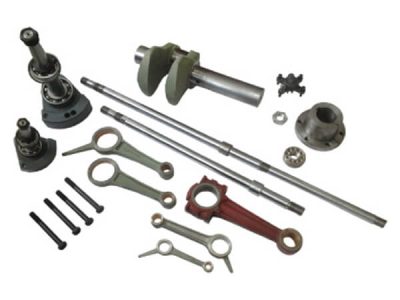While traditional printing processes have their uses, thermography printing offers various advantages. While creating high-quality, consistent prints, thermography uses less ink and paper than standard printing procedures.
In public places, thermographic prints are more resistant to smearing and fading. Because of this cutting-edge printing technology, businesses may minimize printing expenses without losing quality. Thermal printing is at the vanguard of an exciting transition in the printing industry, and companies that embrace it will also be at the forefront.
What Are Some Thermography Printing Applications?
Thermography printing on paper with heat-sensitive toner can result in visually appealing graphics. This cutting-edge technology has the potential to benefit some businesses. Thermographic printing has a wide range of uses and may be used to make the following items:
- Use thermography printing to give your business cards depth and make them stand out. Consider using this printing approach if you want your business cards to appear professional while still outperforming the competition.
- Letterheads with raised text or images may also be created using thermography. This approach of printing your letterhead might make it look more professional.
- Thermography envelopes are an excellent method to dress up your incoming mail. It has been demonstrated that distributing postal mail in this manner increases the rate of opening and reading.
- Brochures with unique text or graphics may be created using thermography. If you choose this printing method, your flyers will have more depth and dimension, making them more engaging and useful.
- Thermography printing may be used to create wedding invitations. This printing technique may help your invitations stand out from the crowd by adding a touch of refinement.
- Thermography printing may be used to generate aesthetically appealing visuals for use in birth announcements, which may appeal to the visually handicapped.
Organizational Frameworks
Businesses may now choose from a wide range of commercial printing businesses. Some commercial printers specialize in a wide variety of products, while others specialize in a narrow range. While some commercial printers want to keep their charges as low as possible, others attempt to strike a balance by giving high quality at a reasonable price. Before choosing a trade printing firm, consider your requirements and budget.
If you need anything printed that your customers will see, use a commercial printing provider that produces high-quality prints. Choose a low-cost trade printer if you’re on a restricted budget. Another factor to consider is the company’s customer service. Before making a purchase, read over various customer reviews.
TEAM Concept Printing is one of the commercial printing companies that can assist you. They offer a reputable printing solution for a variety of enterprises and can give items such as business cards, letterheads, and more. If thermography isn’t for you, they also provide digital coloring and post-press finishing, as well as other printing services.
Is It Better to Hire a Third Party or a Commercial Printer?
Working with a trade printing firm has several advantages over contract printing. Commercial printers have more possibilities than their smaller-scale equivalents. In addition to printing, these professionals can bind, transport, and bind your documents. Working with a trade printer instead of a contract printer provides you with the extra benefit of a far faster turnaround time.
They recognize the significance of meeting deadlines, so you can be confident that your job will be finished on time. Finally, trade printers may have smaller minimum order quantities than contract printers. Printing a few additional document copies will only cost you a little. For a number of reasons, trade printers are favored over other types of printers.
Parts For Industrial Printing Equipment
A commercial printer’s input tray, output tray, print engine, and controller are all crucial components. In this instance, the controller assumes the role of the mind. Its role is to control the printing process and send data to the printer. If you need to print something, check sure your printer has a trustworthy print engine. A set of rollers delivers ink from a reservoir to the print surface, which is one of the moving parts.
Paper is stacked on a tray before being delivered to the printing machine. When the printing is finished, the sheet is ejected into an output tray. Certain office printers have optional accessories, such as a stapler or hole puncher, which are only utilized when necessary. Despite its seeming sophistication, a commercial printer is fundamentally a simple piece of technology capable of generating high-quality sheets rapidly and with minimum user input.
What Exactly is the Role of a Commercial Printer?
Commercial printers cater to a wide range of customers. Commercial printers come in a variety of brands, models, and configurations. Regardless, there are a few essential components that all commercial printers share. The print head, the ink supply system, and the paper feed mechanism are the three main components of any printer. A printer’s “print head” is the component that creates the printed page.
The “media feeding mechanism” of a printer is the component responsible for loading media (paper or otherwise) into the machine. The ink delivery system is responsible for delivering ink to the print head. These three ideas are the foundation of any commercial printing business. Commercial printers are adaptable pieces of equipment capable of producing printed products in a wide range of sizes and formats, including text and images.
Utilizing a Thermographic Printer
Commercial printers generate enormous quantities of printed materials such as books, pamphlets, posters, and greeting cards. There are several printer kinds available, each designed for a certain purpose. An industrial printer, for example, is a subset of a thermography printer. Heat is used by this printer to make the images on the paper pop out.
The powder is applied to the paper before any images are taken. Ink will be imprinted on the leftover powder. After making the paper, it is heated and dried in a circular motion. The heat dissolves the powder, revealing the pattern underneath. Once the paper has cooled, the picture will not fade. Consider purchasing a thermography printer to add a professional touch to your printed products, such as business cards, invitations, and other items.
The Transformation of Commercial Printing
Profitable printing has existed for quite some time. Business printing has existed since the 15th century when Johannes Gutenberg created the first printing press. Commercial printers have provided the world with books, periodicals, and other printed items for hundreds of years. However, around the start of the nineteenth century, new printing processes like lithography and rotary printing arose. Commercial printing benefited from these advances and had grown significantly by the end of the 1800s.
Commercial printing is critical in today’s competitive business landscape. Commercial printers produce more than just product packaging and marketing collateral. Commercial printers may now employ digital printing technology to produce high-quality prints at far lower costs than before.
For example, TEAM Concept Printing can print everything from business cards to billboards. Please visit www.teamconceptprinting.com for more details. You will always get the best-looking products.









Comments